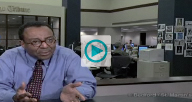Convergence Enhances and Changes Journalism
VideoCentral  Mass Communication
Mass Communication

The Contemporary Journalist: Pundit or Reporter?
Journalists discuss whether the 24/7 news cycle encourages reporters to offer opinions more than facts.
Discussion: What might be the reasons reporters should give opinions, and what might be the reasons why they shouldn’t?
For mainstream print and TV reporters and editors, online news has added new dimensions to journalism. Both print and TV news can continually update breaking stories online, and many reporters now post their online stories first and then work on traditional versions. This means that readers and viewers no longer have to wait until the next day for the morning paper or for the local evening newscast for important stories. To enhance the online reports, which do not have the time or space constraints of television or print, newspaper reporters increasingly are required to provide video or audio for their stories. This might allow readers and viewers to see full interviews rather than just selected print quotes in the paper or short sound bites on the TV report.
However, online news comes with a special set of problems. Print reporters, for example, can do e-mail interviews rather than leaving the office to question a subject in person. Many editors discourage this practice because they think relying on e-mail gives interviewees the chance to control and shape their answers. While some might argue that this provides more thoughtful answers, journalists say it takes the elements of surprise and spontaneity out of the traditional news interview, during which a subject might accidentally reveal information—something less likely to occur in an online setting.
Another problem for journalists, ironically, is the wide-ranging resources of the Internet. This includes access to versions of stories from other papers or broadcast stations. The mountain of information available on the Internet has made it all too easy for journalists to—unwittingly or intentionally—copy other journalists’ work. In addition, access to databases and other informational sites can keep reporters at their computers rather than out tracking down new kinds of information, cultivating sources, and staying in touch with their communities.
Most notable, however, for journalists in the digital age are the demands that convergence has made on their reporting and writing. Print journalists at newspapers (and magazines) are expected to carry digital cameras so they can post video along with the print versions of their stories. TV reporters are expected to write print-style news reports for their station’s Web site to supplement the streaming video of their original TV stories. And both print and TV reporters are often expected to post the Internet versions of their stories first, before the versions they do for the morning paper or the six o’clock news. Increasingly, journalists today are also expected to tweet and blog.